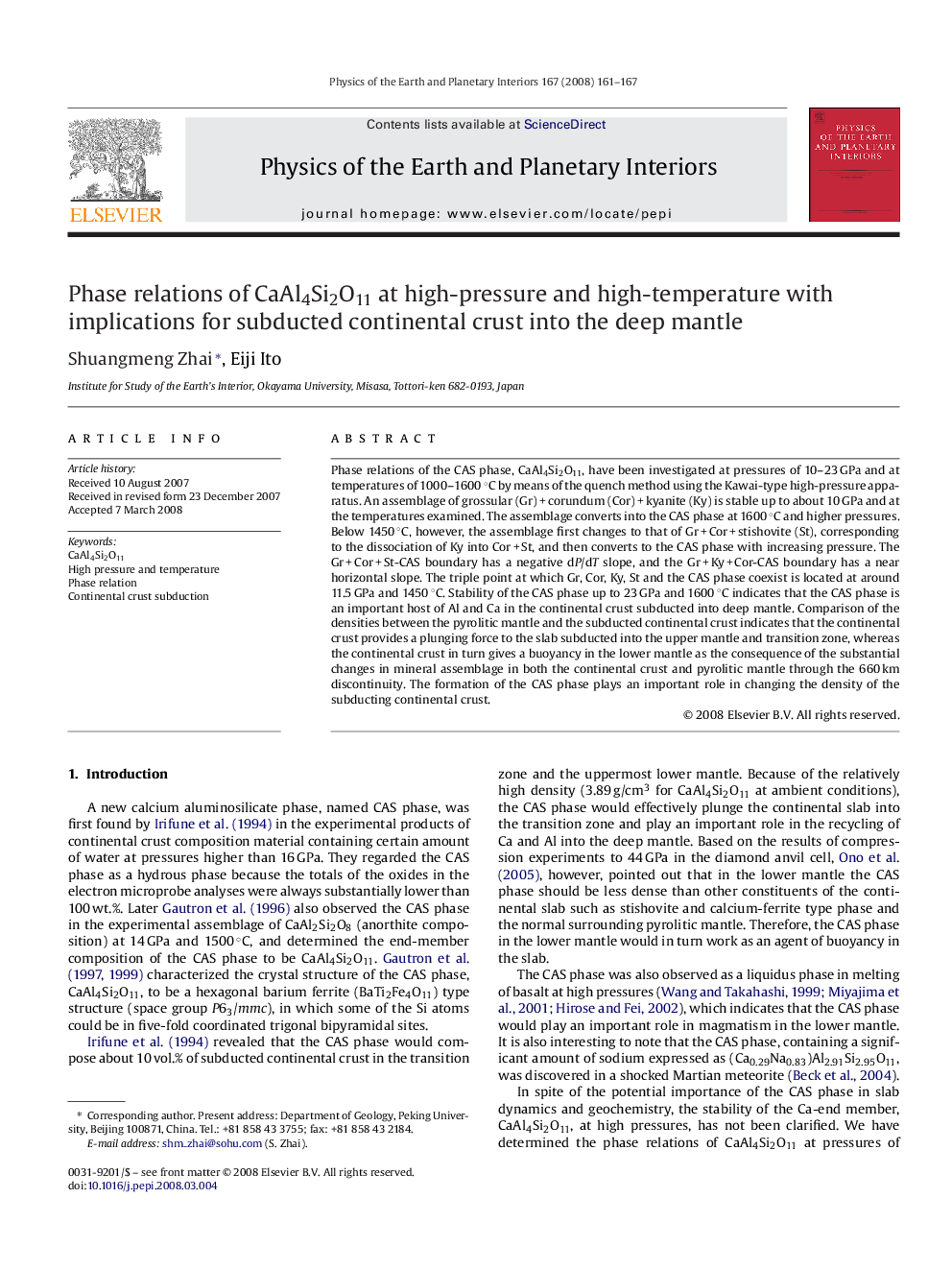| Article ID | Journal | Published Year | Pages | File Type |
|---|---|---|---|---|
| 4742440 | Physics of the Earth and Planetary Interiors | 2008 | 7 Pages |
Phase relations of the CAS phase, CaAl4Si2O11, have been investigated at pressures of 10–23 GPa and at temperatures of 1000–1600 °C by means of the quench method using the Kawai-type high-pressure apparatus. An assemblage of grossular (Gr) + corundum (Cor) + kyanite (Ky) is stable up to about 10 GPa and at the temperatures examined. The assemblage converts into the CAS phase at 1600 °C and higher pressures. Below 1450 °C, however, the assemblage first changes to that of Gr + Cor + stishovite (St), corresponding to the dissociation of Ky into Cor + St, and then converts to the CAS phase with increasing pressure. The Gr + Cor + St-CAS boundary has a negative dP/dT slope, and the Gr + Ky + Cor-CAS boundary has a near horizontal slope. The triple point at which Gr, Cor, Ky, St and the CAS phase coexist is located at around 11.5 GPa and 1450 °C. Stability of the CAS phase up to 23 GPa and 1600 °C indicates that the CAS phase is an important host of Al and Ca in the continental crust subducted into deep mantle. Comparison of the densities between the pyrolitic mantle and the subducted continental crust indicates that the continental crust provides a plunging force to the slab subducted into the upper mantle and transition zone, whereas the continental crust in turn gives a buoyancy in the lower mantle as the consequence of the substantial changes in mineral assemblage in both the continental crust and pyrolitic mantle through the 660 km discontinuity. The formation of the CAS phase plays an important role in changing the density of the subducting continental crust.
